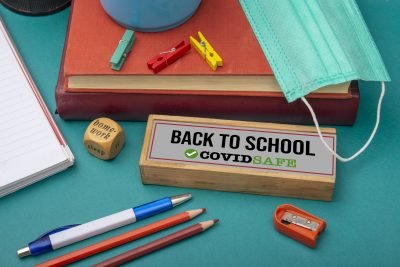Washington State Superintendent Chris Reykdal predicts that 2020-21 will be “the most complicated school year in American history.” In preparation, the Office of Superintendent of Public Instruction (OSPI) is turning out new guidance for school districts that serve more than a million students.
About 143,000 Washington students receive special education and related services. No federal or state protections for students with disabilities are waived due to the pandemic.
Decisions about what school looks like are left to local districts, which follow policies established by elected school boards. School board meetings are required monthly and must follow the state’s Open Public Meetings Act (Chapter 42.30 in the Revised Code of Washington). Families can reach out to their local district for information about how and when school boards meet. Public comment is part of each public meeting, and open meeting rules apply in any space or platform.
Among OSPI guidance released in summer 2020 is a 60-page booklet: Reopening Washington Schools 2020: Special Education Guidance. Recommendations encourage schools to collaborate with families in providing equitable access to learning opportunities and to include all students when designing curricula for a range of delivery methods.
PAVE provides an article that summarizes some content from OSPI’s guidance and provides more detail about navigating special education regardless of what school looks like: IEP on Pause? How to Support Continuous Learning.
Reykdal and WA Governor Jay Inslee spoke Aug. 5, 2020, at a press conference about school decision-making amid the nation’s ongoing struggle to contain the COVID-19 pandemic. Gov. Inslee said he would not order the closure of all schools, as he did in spring 2020. Instead, Inslee said he would rely on local districts to use sound judgment about whether school buildings can open safely, in light of a region’s health data.
At the August press conference, Inslee announced plans to send $8.8 million in federal CARES Act stimulus money to OSPI, which will use some funds to cover the costs of internet for students eligible for free or reduced-price meals. OSPI has committed to partner with community-based organizations to help families secure childcare, engage in language translation services, and other parent and family engagement strategies.
CARES Act funds also will support professional development to upgrade how distance learning is delivered statewide. In partnership with OSPI, the state’s nine regional educational service districts (ESDs) will provide support and training to help districts choose a consistent online platform and train staff about best practices. “Last spring, we heard consistently from educators that they needed more training on how to effectively use online learning management systems,” Reykdal said, adding:
“To make online learning more effective this fall, we have to streamline this. Students and parents should be able to focus on learning, and educators should be focused on teaching, without the modality of the instruction getting in the way. Our ESDs will provide educators with training in a handful of learning management systems consistent with guidance we have already sent to districts to simplify their remote learning management systems for families.”
Reykdal and Inslee encouraged school districts in areas of the state with low rates of COVID-19 infection to prioritize face-to-face instruction for those who are most likely to struggle with remote learning: elementary schoolers and those with disabilities.
In circumstances where in-person school is offered, families will make their own decisions about whether to send children or keep them home. Here are a few tools families might use to prepare for the school year:
- The Washington State Hospital Association provides a Coronavirus Tracking Map.
- The Centers for Disease Control and Prevention (CDC) provides a School Decision-Making Tool for Parents, Caregivers, and Guardians.
- Doctors from the Infectious Diseases Society of America (IDSA) offer their recommendations in a July 28, 2020, Podcast. Here are the IDSA’s primary questions:
- Is the rate of infection in the community going down?
- Does the community have a clear protocol for testing and contact tracing?
- Does the school provide a clear protocol for what to do if/when a student or staff member tests positive for COVID-19?
- Team Child provides direct assistance to family caregivers of children with special needs in King, Pierce, Spokane, and Yakima counties. A free online manual provides information for all families: Education in the wake of COVID-19 Know Your Rights.
- PAVE provides a variety of articles, videos, and resources:
- Links to Support Families During the Coronavirus Crisis
- Links for Learning at Home During School Closure
- A library of short Mindfulness Videos for all ages/abilities
- Stay-Home Help: Get Organized, Feel Big Feelings, Breathe
- Lessons at Home—Teaching Ideas for Parents (videos)
- IEP on Pause? How to Support Continuous Learning
- Key Information and Creative Questions for Families to Consider During COVID-19
- Webinars offer Parent Training to Support Behavior during Continuous Learning
- Willa Discovers Telehealth (video)
- Technology Provides Options for Medical Care from a Distance
- Quick Look: How to Prepare for a Virtual Meeting
- High School Halt: Ways to Support Youth Working on Adult Life Plans During COVID-19

